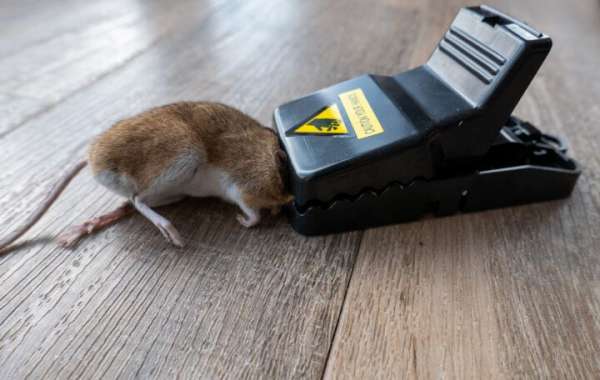Mouse traps have been a staple in pest control for centuries, evolving from rudimentary devices to sophisticated tools designed to address a variety of rodent issues. With mice being one of the most common household pests, understanding the different types of mouse traps, their effectiveness, and how to use them properly can make a significant difference in maintaining a rodent-free environment. This article provides a comprehensive overview of mouse traps, including their types, effectiveness, and best practices for use.
Types of Mouse Traps
- Snap Traps
Description: Snap traps are one of the most traditional and widely used types of mouse traps. They consist of a metal bar that snaps down when a mouse triggers the trap, killing the rodent instantly.
Effectiveness: Snap traps are highly effective when used correctly. They are designed to deliver a quick, humane kill, which makes them a popular choice for immediate results.
Best Practices:Placement: Place snap traps along walls, as mice tend to travel close to surfaces. Use multiple traps in areas with high mouse activity.Baiting: Use attractive bait such as peanut butter, sunflower seeds, or bits of bacon. Avoid using too much bait, as this can make the trap less effective.Safety: Handle traps carefully to avoid accidental injuries. Always keep them away from children and pets. - Glue Traps
Description: Glue traps use a sticky adhesive to capture mice. When a mouse steps on the trap, it becomes stuck and cannot escape.
Effectiveness: Glue traps are less effective for severe infestations as they capture only one mouse at a time and can take a while to work. They are also considered less humane since trapped mice may suffer prolonged distress.
Best Practices:Placement: Position glue traps in areas where you see mouse droppings or signs of activity.Monitoring: Check traps frequently to ensure that captured mice are dealt with promptly.Ethical Considerations: Be mindful of the ethical concerns associated with glue traps and consider alternatives if you are concerned about animal welfare. - Live Catch Traps
Description: Live catch traps, also known as catch-and-release traps, are designed to capture mice alive so they can be released elsewhere.
Effectiveness: Live catch traps can be effective if used correctly, but they require frequent monitoring to ensure that mice do not suffer from lack of food or water.
Best Practices:Placement: Place these traps where mice are active, and ensure that the trap is large enough to comfortably accommodate the mouse.Baiting: Use appealing bait to attract the mouse, such as a small amount of peanut butter or cheese.Release: Release mice far from your home to prevent them from returning. Ensure that the release location is suitable and humane. - Electric Traps
Description: Electric traps use a high-voltage shock to kill mice instantly. They are designed to be both effective and humane by delivering a quick, lethal shock.
Effectiveness: Electric traps are highly effective and can handle multiple mice before needing to be emptied. They are considered more humane compared to glue traps.
Best Practices:Placement: Position electric traps along walls and in areas where mouse activity is high.Maintenance: Regularly check and clean the traps to ensure optimal performance.Safety: Ensure that electric traps are kept out of reach of children and pets. - Multiple Catch Traps
Description: Multiple catch traps are designed to capture several mice at once. These traps use a design that allows multiple mice to enter and be trapped in one device.
Effectiveness: Multiple catch traps are effective for managing larger infestations but require regular monitoring to prevent overcrowding and to ensure that trapped mice are dealt with.
Best Practices:Placement: Place these traps in high-traffic areas for mice.Monitoring: Check traps frequently and empty them regularly to prevent overcrowding and ensure humane treatment of captured mice.
Effectiveness of Mouse Traps
The effectiveness of mouse traps depends on various factors, including the type of trap, placement, and baiting. Generally, snap traps and electric traps are considered the most effective for immediate results. However, for a severe infestation, a combination of traps may be necessary.
Best Practices for Using Mouse Traps
- Identify Mouse Activity
Before setting traps, identify areas where mouse activity is high. Look for signs such as droppings, gnaw marks, and nests. Proper identification helps in placing traps effectively. - Strategic Placement
Place traps along walls, near food sources, and in areas where you have noticed signs of mouse activity. Mice prefer to travel along edges, so positioning traps in these areas increases the likelihood of catching them. - Proper Baiting
Use appealing bait to attract mice to the trap. Peanut butter, cheese, and sunflower seeds are common choices. Avoid using too much bait, as it can make the trap less effective. - Regular Monitoring
Check traps frequently to ensure they are functioning properly and to address any captured mice promptly. Regular monitoring helps in managing the infestation more effectively and prevents traps from becoming ineffective over time. - Cleanliness
Maintain cleanliness in and around areas where traps are placed. Removing food sources and sealing entry points can help reduce mouse activity and improve the effectiveness of traps. - Humane Considerations
Consider the humane aspects of mouse traps. If you are concerned about animal welfare, opt for live catch traps or electric traps that provide a quick and humane kill. Always handle captured mice with care and release them responsibly. - Safety
Handle traps carefully to avoid injuries, and keep them out of reach of children and pets. Follow manufacturer instructions for safe use and maintenance.
Conclusion
Mouse traps remain a crucial tool in pest control, offering various options to address rodent issues effectively. Whether you choose snap traps, glue traps, live catch traps, electric traps, or multiple catch traps, understanding their types, effectiveness, and proper usage can significantly impact your success in managing mouse infestations. By following best practices and considering humane aspects, you can keep your home or business mouse-free while maintaining a commitment to ethical treatment of animals.




